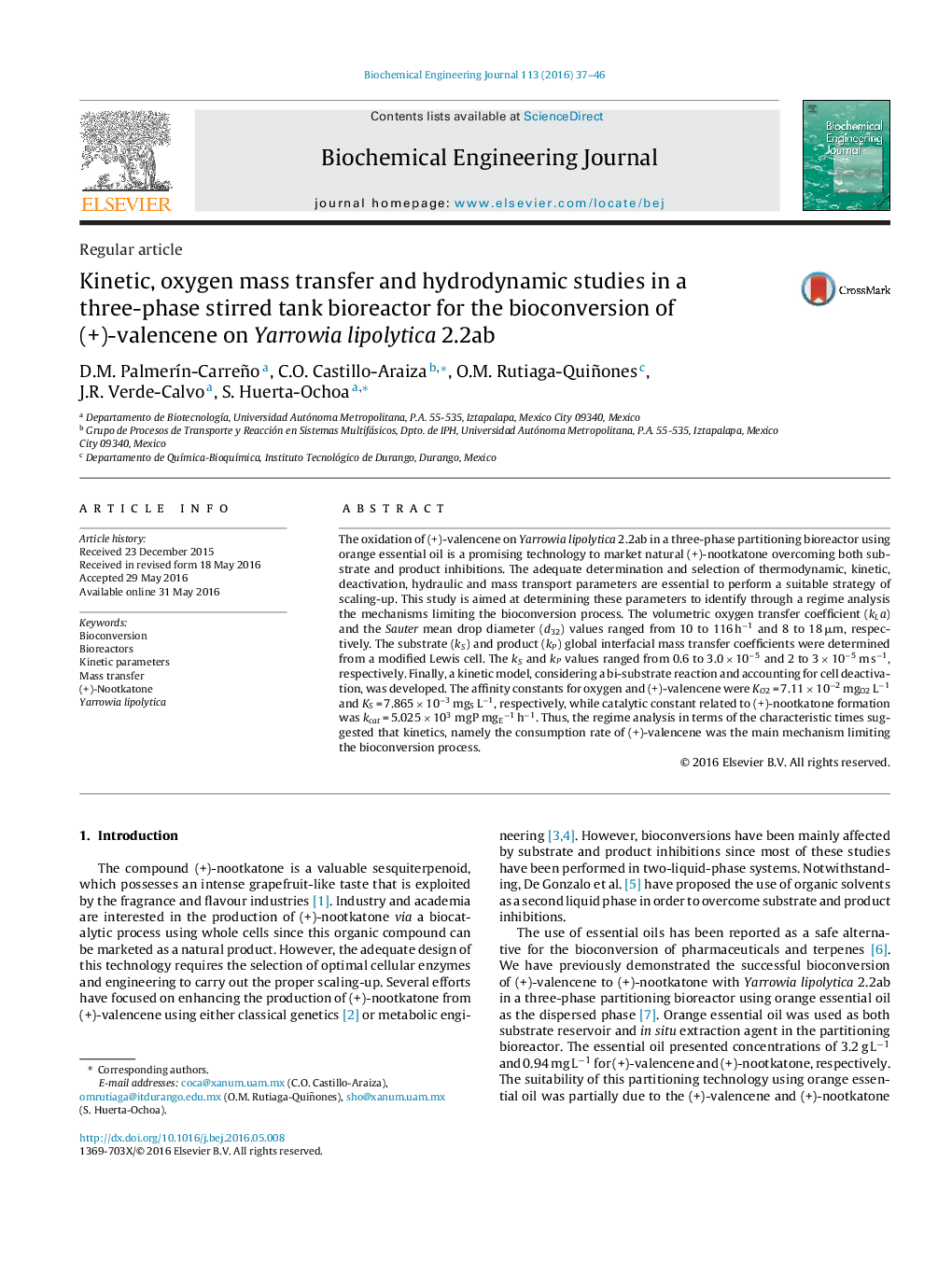| Article ID | Journal | Published Year | Pages | File Type |
|---|---|---|---|---|
| 2738 | Biochemical Engineering Journal | 2016 | 10 Pages |
•We studied valencene bioconversion using orange essential oil as dispersed phase.•Kinetic, deactivation, hydraulic and mass transport phenomena were evaluated.•A kinetic model, including cell deactivation, was developed.•A regime analysis showed that kinetics limited the bioconversion process.
The oxidation of (+)-valencene on Yarrowia lipolytica 2.2ab in a three-phase partitioning bioreactor using orange essential oil is a promising technology to market natural (+)-nootkatone overcoming both substrate and product inhibitions. The adequate determination and selection of thermodynamic, kinetic, deactivation, hydraulic and mass transport parameters are essential to perform a suitable strategy of scaling-up. This study is aimed at determining these parameters to identify through a regime analysis the mechanisms limiting the bioconversion process. The volumetric oxygen transfer coefficient (kLa) and the Sauter mean drop diameter (d32) values ranged from 10 to 116 h−1 and 8 to 18 μm, respectively. The substrate (kS) and product (kP) global interfacial mass transfer coefficients were determined from a modified Lewis cell. The kS and kP values ranged from 0.6 to 3.0 × 10−5 and 2 to 3 × 10−5 m s−1, respectively. Finally, a kinetic model, considering a bi-substrate reaction and accounting for cell deactivation, was developed. The affinity constants for oxygen and (+)-valencene were KO2 = 7.11 × 10−2 mgO2 L−1 and KS = 7.865 × 10−3 mgS L−1, respectively, while catalytic constant related to (+)-nootkatone formation was kcat = 5.025 × 103 mgP mgE−1 h−1. Thus, the regime analysis in terms of the characteristic times suggested that kinetics, namely the consumption rate of (+)-valencene was the main mechanism limiting the bioconversion process.
